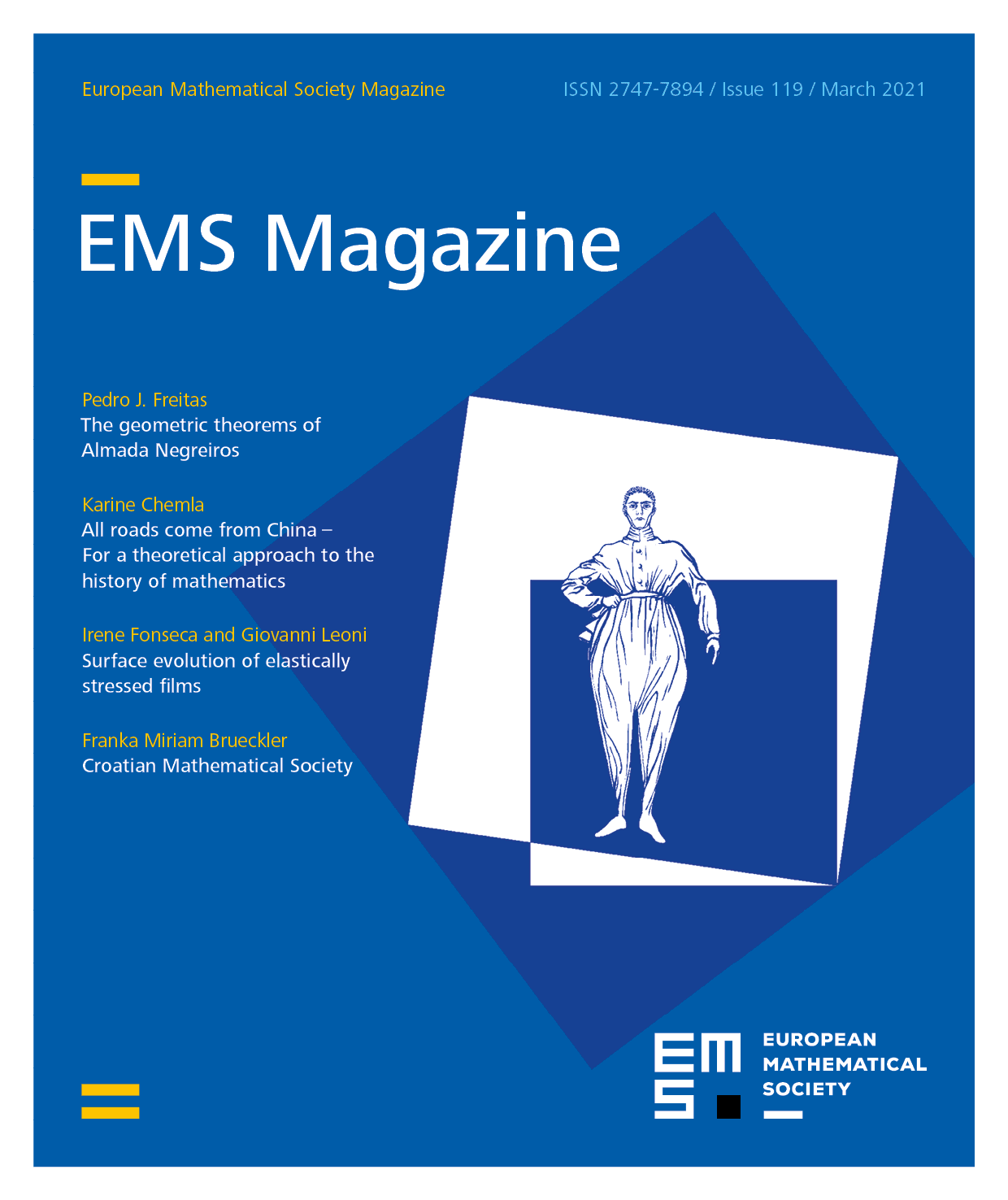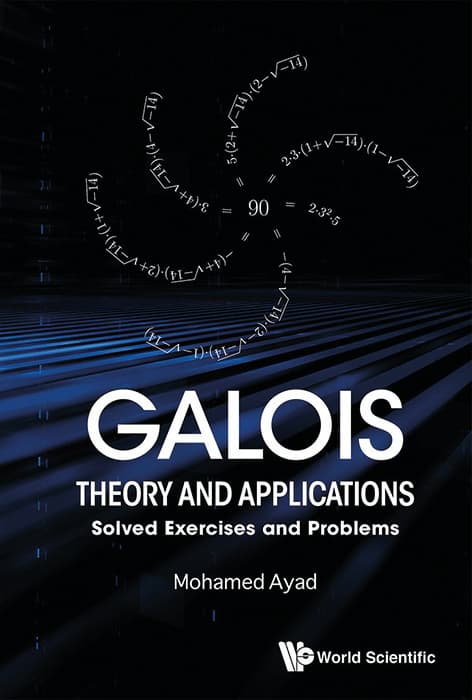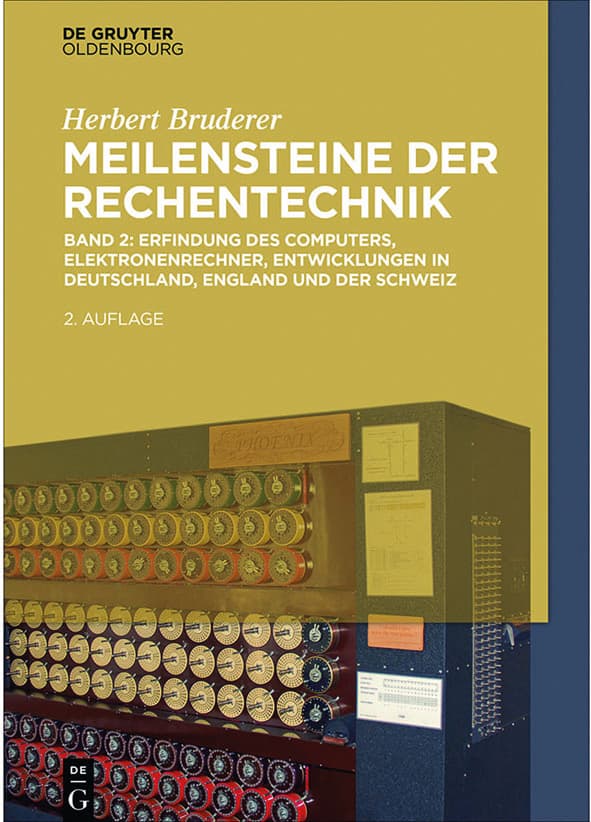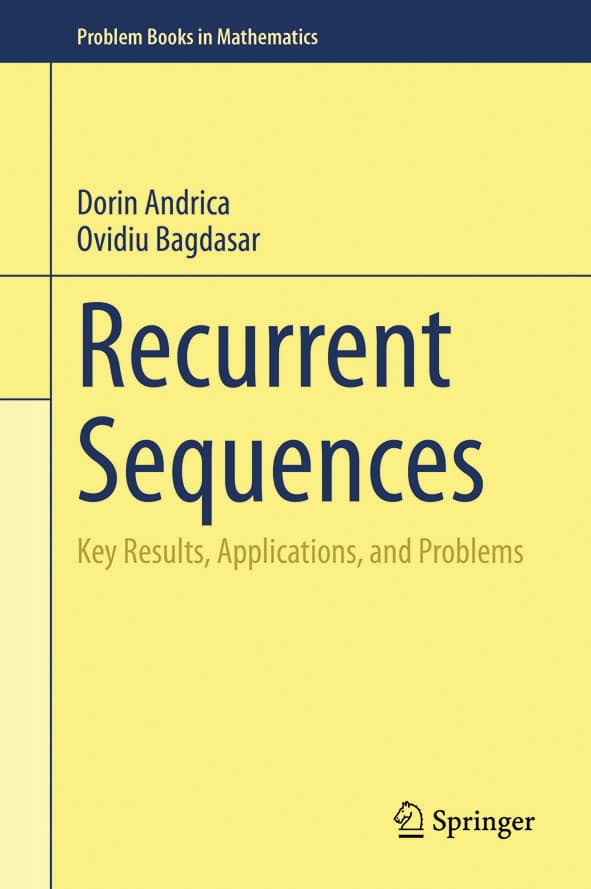About Galois Theory and Applications – Solved Exercises and Problems by Mohamed Ayad
Reviewed by Jean-Paul Allouche
All rights reserved.
A book entirely devoted to exercises and problems with solutions about Galois theory and its applications: is this something new? is this something interesting? The answer to the first question is probably yes. Of course there are already several books on the subject that contain exercises; there is even a book entitled Galois Theory Through Exercises by J. Brzeziński. But the book under review contains nothing but a very large number of exercises (285) that one irresistibly wants to attack – without even looking at the solutions provided by the author. That is what I did, browsing through the eleven chapters of the book (Polynomials, Fields, Generalities; Algebraic extension, Algebraic closure; Separability, Inseparability; Normal extensions, Galois extensions, Galois groups; Finite fields; Permutation polynomials; Transcendental extensions, Linearly disjoint extensions, Luroth’s theorem; Multivariate polynomials; Integral elements, Algebraic number theory; Derivations), picking exercises, and trying to solve them. Here are a few examples: Exercise 2.31 begins with solving in an algebraic closure of , and ends by asking for a proof that can be expressed as the composition of two polynomials of degree . Exercise 5.26 plays with the cyclic extensions of degree over the rationals; Exercise 8.1 looks innocent but is related to the Christol theorem on algebraicity of “automatic” series; Exercise 8.3 requires proving (with a hint …) that if is an algebraically closed field such that , where is an extension of finite type of an algebraically closed field , then one must have . Exercise 10.24 leads to the determination of all the distinct factorizations of into a product of irreducibles in , a problem which yields the nice image of the cover page. Solving (or trying to solve …) all the exercises gives a clear answer to the second question at the beginning of this survey: yes, this book is definitely interesting, and I warmly recommend it. It can be used by beginners who want to learn about Galois theory in a more playful manner, by colleagues who want to teach really everything about Galois theory, and even by researchers who might discover useful results and ideas there.
Mohamed Ayad, About Galois Theory and Applications. Solved Exercises and Problems. World Scientific, 2018, 452 pages. Hardcover ISBN 978-981-3238-30-5. eBook ISBN 978-981-3238-32-9.
Meilensteine der Rechentechnik (Milestones in Analog and Digital Computing) by Herbert Bruderer
Reviewed by Jean-Paul Allouche
All rights reserved.
After the impressive and remarkable first edition (one volume of more than 800 pages, see the Newsletter of the EMS, December 2016, Issue 102, p. 154), this second edition consists of two volumes totaling over 1500 pages. It has the same good qualities as the previous edition but contains twice as much material, which makes the set of the two volumes of the second edition an extremely useful contribution to the history of computing machines. I will concentrate on the second volume. The first part is devoted to general questions and answers about computers, from “Who invented the first computer” to “What is a Turing machine?” through questions about theoretical computer science, algorithms and universal machines; from “What is a von Neumann computer” (and is it a series or parallel computer?) to theoretical questions about storage; from political and historical issues to technical developments. This first chapter is already extraordinarily rich. It is followed by chapters that provide a detailed analysis of events in three different countries, namely Germany, Great Britain, and Switzerland. In these chapters, we learn an incredible number of things that most of us probably never suspected, e.g., the difference between computing machines and logical devices according to Konrad Zuse (and questions about “computers” playing chess), the whole history of Enigma and of the “Turing–Welchman bomb”, the question of whether Churchill really ordered all “colossal” computers to be destroyed, the history of the Swiss computer Ermeth, acronym for “Elektronische Rechenmaschine der ETH” (followed in particular by Lilith and Ceres: given that these last two names are related to religious figures, one might ask whether the acronym Ermeth had something to do with the Hebrew word for truth, namely emeth, see, e.g., biblicalstudies.org.uk/pdf/ifes/5-4_blocher.pdf, page 50). A further chapter is devoted to the first computing devices from almost twenty other countries: let me just cite Spain with Leonardo Torres y Quevedo, his analog computer, his chess-playing computer and his analytical machine. The book also contains an extremely useful dictionary for all technical terms, giving the English equivalent for all German words or expressions and vice versa, not to mention a bibliography over 300 pages long and an amazing set of images! After having read this volume and the first volume, what strikes me most is the incredibly rich history of computer science, and the incredibly deep ignorance of this history by essentially everybody who uses computers for whatever purpose. This is just one of the reasons for which these two beautiful and well-documented volumes should definitely be necessary reading.
Added note: I was going to add that it would be good to translate these volumes into English (and French), when I learned that an English version is due to appear very soon – the electronic English version was made available on January 6 (www.springer.com/de/book/9783030409739).
Herbert Bruderer, Meilensteine der Rechentechnik. Erfindung des Computers, Elektronenrechner, Entwicklungen in Deutschland, England und der Schweiz, 2. Auflage, Band 2 (Milestones in Analog and Digital Computing, 2nd edition, volume 2). De Gruyter Oldenburg, 2018, 829 pages. ISBN 978-3-11-060088-9. e-ISBN 978-3-11-060261-6.
Recurrent Sequences. Key Results, Applications and Problems by Dorin Andrica and Ovidiu Bagdasar
Reviewed by Michael Th. Rassias
All rights reserved.
This book contains an ample presentation of recurrent sequences from multiple perspectives, initiating the readers with classical results and gradually leading them to the very frontier of what is known in the subject. The expository style is engaging and the succinct presentation of theoretical results is accompanied by short but tricky examples which invite the reader to investigate the topic further.
The first six chapters of the book present classical and recent results on the topic. Numerous results have been obtained by the authors, and highlight connections between recurrences and combinatorics, number theory, integer sequences, and random number generation. The diagrams of orbits of second and third-order recurrent sequences in the complex plane presented in the book add significantly to its artistic quality. About a third of the book is devoted to an inspired selection of 123 (the 10th Lucas number) Olympiad training problems, accompanied by detailed solutions.
Chapter 1 offers a succinct presentation of the fundamentals of recurrence relations, along with examples of recurrent sequences naturally arising in algebra, combinatorics, geometry, analysis, and mathematical modelling.
Chapter 2 is devoted to first and second-order linear recursions, as well as homographic recurrences. Examples include the Fibonacci sequence and its close companions: the Lucas, Pell or Pell–Lucas sequences, for which the authors present a palette of interesting identities with elegant proofs. The discussion extends to special families of polynomials, which are then related back to the Fibonacci, Lucas, Pell and Pell–Lucas sequences, and used to establish novel number theoretic results. This chapter also presents homographic sequences with constant and variable coefficients.
Chapter 3 presents arithmetic properties of the Fibonacci, Lucas, Pell and Pell–Lucas sequences, with links to pseudoprimality. The authors prove new theoretical results, present recent entries to the Online Encyclopedia of Integer Sequences, and formulate a few interesting conjectures. Some of these results have already been extended to generalized Pell and Pell-Lucas sequences in the recent paper [Andrica, D. and Bagdasar, O.: On some new arithmetic properties of the generalized Lucas sequences. Mediterr. J. Math., to appear (2021)]. The complex factorization of the polynomials
is used to derive some elegant trigonometric formulae for these classical sequences.
Chapter 4 is devoted to ordinary and exponential generating functions, which are used to evaluate the general term formulae for many classical polynomials and sequences in Sections 4.1 and 4.2. The interesting version of Cauchy’s integral formula given in Section 4.3 is used to derive integral formulae for the Fibonacci, Lucas, Pell and Pell–Lucas sequences. In some recent papers the authors have used this approach to establish novel integral formulae for the coefficients of cyclotomic, Gaussian, multinomial, or polygonal polynomials.
Chapter 5 explores second order linear recurrences depending on a family of four complex coefficients (often called Horadam sequences). The results include necessary and sufficient conditions for periodicity (Section 5.2), the geometric structure (Section 5.3), and the enumeration of Horadam orbits with a fixed length (Section 5.4). An atlas presenting numerous beautiful diagrams of periodic and non-periodic Horadam patterns is given in Section 5.6, while Section 5.7 presents a Horadam-based pseudo-random number generator. Some examples of periodic non-homogeneous Horadam sequences are given in Section 5.8. The chapter is based on many recent articles.
Chapter 6 further develops the ideas presented in Chapter 2, featuring a collection of useful methods related to generating functions, matrices and interpolating geometric inequalities. Some results for systems of linear recurrence sequences are also given, with applications to Diophantine equations. Extending the results from Chapter 5, the authors present complex linear recurrent sequences of higher order, periodicity conditions, geometric structure, and enumeration of periodic orbits with a fixed length. An atlas of exciting geometric patterns produced by third-order linear recursions in the complex plane is also showcased. The chapter concludes with a presentation of connections between the theory of linear recurrences and finite differences.
Chapter 7 contains 123 Olympiad training problems involving recurrent sequences, which are solved in detail in Chapter 8, sometimes with multiple solutions. The problems concern linear recurrence sequences of first, second and higher orders, some classical sequences, homographic sequences, systems of sequences, complex recurrence sequences, and recursions in combinatorics. Many of the problems were actually proposed by the authors, while the others were selected from international competitions or classical journals.
The book ends with an appendix and a rich bibliography including 177 references, many of which represent contributions by the authors. An index is also provided.
This book teaches numerous fundamental facts and techniques which are central in mathematics. It is both a research monograph and a delightful problem book, which I feel will spark the interest of a wide audience, from mathematics Olympiad competitors and their coaches to undergraduate or postgraduate students, or professional mathematicians with an interest in recurrences and their multiple applications.
Dorin Andrica and Ovidiu Bagdasar, Recurrent Sequences. Key Results, Applications and Problems, Springer International Publishing, 2020, 402 + xiv pages. Hardcover ISBN 978-3-030-51501-0. eBook ISBN 978-3-030-51502-7.
Cite this article
Jean-Paul Allouche, Book reviews. Eur. Math. Soc. Mag. 119 (2021), pp. 54–56
DOI 10.4171/MAG/13


